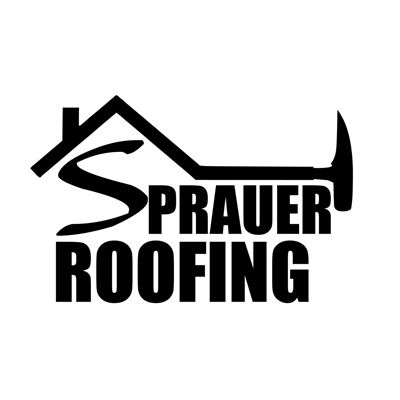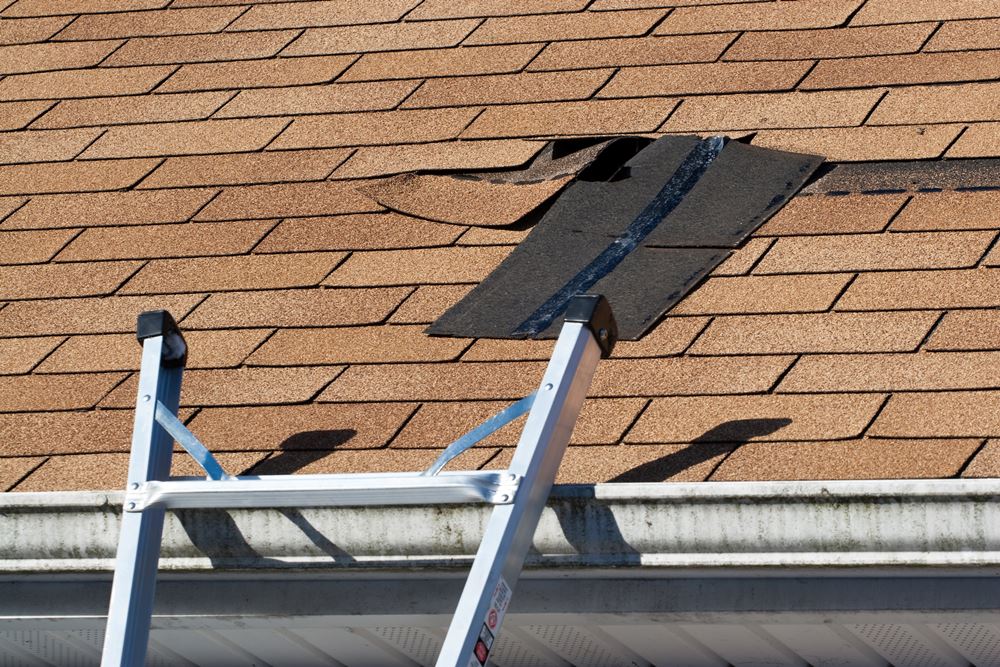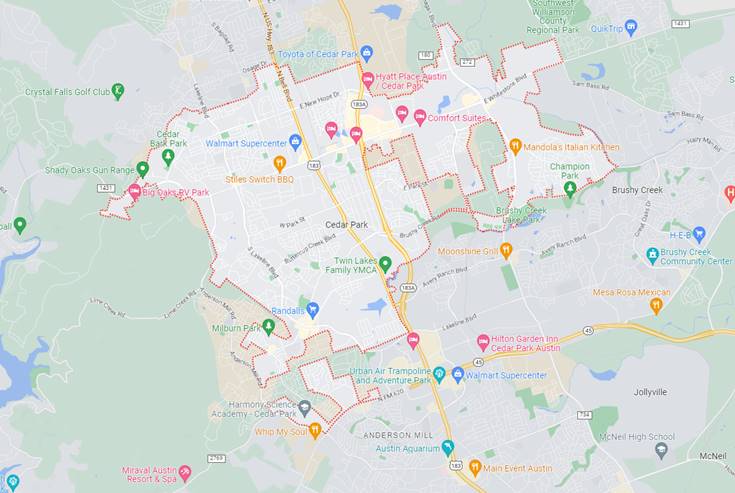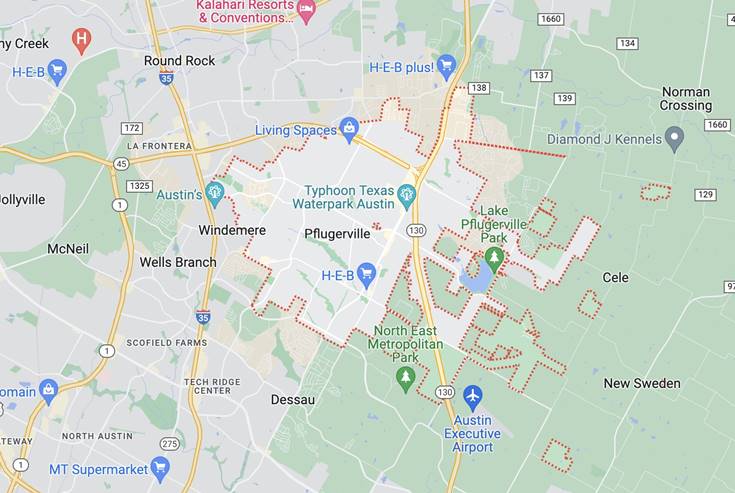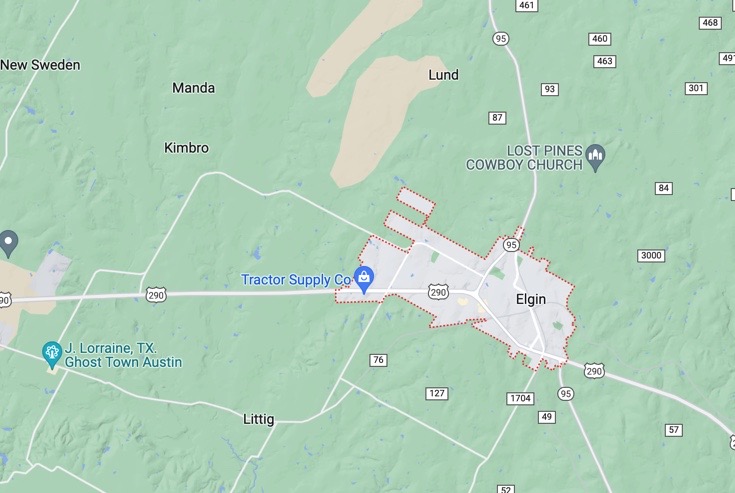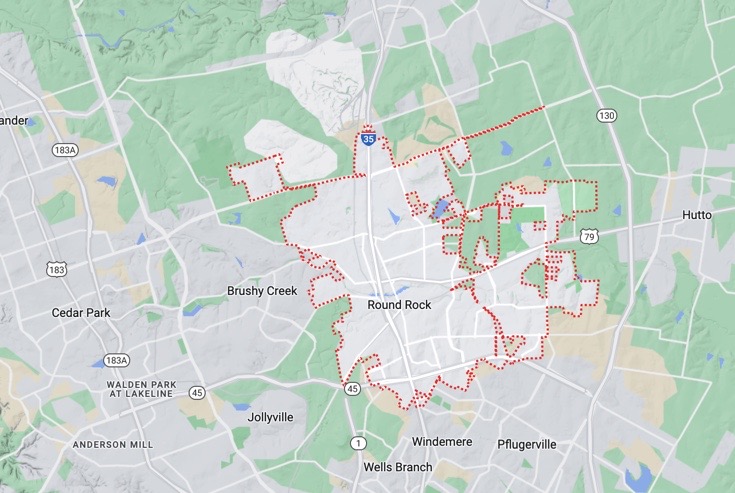A well-maintained commercial roof is an essential aspect of any successful business. Not only does it protect your building and everything inside it, but it also plays a significant role in the overall performance and longevity of the structure. In this article, we will explore the importance of regular commercial roof maintenance, the benefits of a well-maintained roof, and provide a comprehensive overview of the steps you need to take to ensure long-lasting performance.
Importance of regular commercial roof maintenance
Routine maintenance is crucial for the health and longevity of any commercial roof. Neglecting this essential task can lead to costly repairs, premature failure, and even the need for a complete roof replacement. Regular inspections and maintenance can help identify and address potential issues before they escalate, saving your business time and money in the long run.
Benefits of a well-maintained roof
A well-maintained commercial roof offers several benefits, including:
- Extended lifespan: Regular maintenance can prolong the life of your roof, preventing the need for premature replacement and reducing overall costs.
- Improved energy efficiency: A properly maintained roof helps to regulate the temperature inside your building, reducing energy consumption and lowering utility bills.
- Enhanced safety: Regular inspections can identify potential hazards or weak points, reducing the risk of accidents and protecting your employees and customers.
- Prevention of costly repairs: Identifying and addressing minor issues before they become major problems can help you avoid expensive, time-consuming repairs.
- Enhanced aesthetics: A well-maintained roof can improve the overall appearance of your building, contributing to a professional image for your business.
Overview of the article’s content
In this comprehensive guide, we will cover the following topics to help you maintain your commercial roof for optimal performance:
- Regular inspections and their importance
- Identifying common roofing issues and how to address them
- Preventative maintenance strategies
- The role of professional roof maintenance services
- Creating a commercial roof maintenance plan
Following the advice in this ultimate guide, you’ll be well-equipped to maintain your commercial roof and ensure its long-lasting performance.
Types of Commercial Roofing Systems
Before diving into the maintenance aspect, it’s essential to understand the various types of commercial roofing systems available. Each roofing system has its unique features, advantages, and maintenance requirements. This section will provide an overview of the most common commercial roofing systems.
Built-up Roofing (BUR)
Built-up roofing, also known as BUR, is a traditional roofing system that consists of alternating layers of bitumen (asphalt or coal tar) and reinforcing fabrics (such as fiberglass or organic felts). The system is finished with a top layer of gravel or mineral granules, which provides UV protection and fire resistance. BUR has been used for over a century and is known for its durability and long-lasting performance.
Modified Bitumen
Modified bitumen is an evolution of the BUR system, utilizing advanced technology to improve performance and installation ease. It combines the benefits of BUR with the added flexibility and weather resistance provided by polymer-modified bitumen sheets. Modified bitumen roofing systems can be installed using various methods, including torch-applied, self-adhered, or cold-applied.
Thermoset (EPDM) Roof Membrane
Thermoset roof membranes, commonly known as EPDM (ethylene propylene diene monomer), are made from a single-ply rubber material. EPDM is highly resistant to weathering, UV radiation, and extreme temperature fluctuations. This roofing system is lightweight, flexible, and can be installed using various methods, such as mechanically fastened, ballasted, or fully adhered.
Thermoplastic (PVC and TPO) Roof Membrane
Thermoplastic roof membranes, such as PVC (polyvinyl chloride) and TPO (thermoplastic olefin), are popular for commercial roofing systems due to their durability, energy efficiency, and ease of use installation. These single-ply membranes are heat-welded at the seams, creating a strong, watertight bond. PVC and TPO offer excellent resistance to chemicals, UV radiation, and punctures.
Metal Roofing
Metal roofing systems are popular for commercial buildings due to their longevity, durability, and low maintenance requirements. Metal roofs are typically made from steel, aluminum, copper, or zinc and can be installed in various styles, such as standing seam, corrugated, or flat panels. They are also known for their energy efficiency and ability to withstand extreme weather conditions.
Green Roofs
Green roofs, or vegetative roofs, are eco-friendly roofing options that incorporate plants and vegetation on the roof surface. Green roofs help to reduce the urban heat island effect, improve air quality, and manage stormwater runoff. They also provide excellent insulation, reducing energy consumption and providing a natural habitat for wildlife.
Each commercial roofing system has its unique maintenance requirements, making it crucial to understand your specific roof type to ensure proper care and long-lasting performance.
Common Roofing Issues and Solutions
Commercial roofs can experience various issues over their lifespan. You can prevent further damage and costly repairs by identifying these problems early and addressing them promptly. Here, we will discuss common roofing issues and their solutions.
Leaks and Moisture Infiltration
Leaks are a common roofing issue that can lead to severe structural damage if not addressed promptly. Moisture infiltration can cause wood rot, mold growth, and damage to the building’s interior. To fix a leak, locate the source of the water intrusion, and make the necessary repairs. This may involve sealing gaps, replacing damaged materials, or repairing punctures.
Punctures and Tears
Punctures and tears in the roofing membrane can lead to water infiltration and damage to the roof system. These can occur due to foot traffic, fallen debris, or improper installation. Repairing punctures and tears typically involves patching the damaged area with compatible roofing material and ensuring a watertight seal.
Pooling Water
Pooling water, or ponding, is a common issue with flat or low-slope commercial roofs. This can lead to increased pressure on the roof structure, leaks, and accelerated material degradation. To address pooling water, ensure proper drainage by clearing debris, unclogging drains, and installing additional drains or tapered insulation if necessary.
Blistering and Bubbling
Blistering and bubbling occur when air or moisture is trapped between layers of roofing materials, causing them to separate. This issue can lead to reduced roof performance and increased susceptibility to leaks. Repairing blisters and bubbles may involve cutting out the affected area, removing trapped moisture or air, and patching the area with new roofing material.
Shrinkage
Roofing materials, especially single-ply membranes like EPDM, can shrink over time due to temperature fluctuations and UV exposure. Shrinkage can lead to pulling at the seams, flashing, and other roof penetrations, causing leaks and damage. To address shrinkage, roofing professionals may need to reattach or replace the affected materials and ensure proper sealing.
Damaged Flashing
Flashing is installed around roof penetrations, such as vents, skylights, and HVAC units, to create a watertight seal. Damaged or improperly installed flashing can result in leaks and moisture infiltration. Repairing damaged flashing may involve resealing the affected area, reattaching loose flashing, or replacing the damaged flashing material.
Blocked Drains and Gutters
Blocked drains and gutters can cause water to overflow and pool on the roof, leading to leaks and structural damage. Regularly inspect and clean your roof’s drains, gutters, and downspouts to ensure proper water flow and prevent blockages.
Roof Material Degradation
Roof materials can degrade over time due to UV radiation, weathering, and other environmental factors. Degradation can lead to reduced performance, leaks, and eventual roof failure. To address material degradation, regularly inspect your roof for signs of wear and damage, and replace or repair the affected materials as needed.
By being aware of these common roofing issues and their solutions, you can help ensure the longevity and performance of your commercial roof.
Regular Maintenance Tasks for Commercial Roofs
Proper maintenance is essential to prolong the life of your commercial roof and prevent costly repairs. Below, we outline regular maintenance tasks that will help you keep your roof in top condition.
Visual Inspections
Regular visual inspections are crucial for identifying potential issues before they become severe. Inspect your roof at least twice yearly, preferably during spring and fall and after severe weather events. Look for signs of damage, wear, or other issues requiring attention.
Cleaning the Roof Surface
Debris, such as leaves, branches, and dirt, can accumulate on your roof, leading to blocked drains, water pooling, and material degradation. Regularly clean your roof surface to remove debris and prevent these issues.
Clearing Gutters and Drains
Ensure proper water flow by regularly inspecting and clearing your roof’s gutters, drains, and downspouts. This will help prevent blockages, pooling water, and potential structural damage.
Checking for Water Damage
Inspect your roof for signs of water damage, such as leaks, staining, or mold growth. Address any water damage issues promptly to prevent further damage to your roof and building structure.
Repairing Punctures and Tears
Regularly check your roofing membrane for punctures and tears that could lead to leaks and water infiltration. Repair any damage by patching the affected area with compatible roofing material and ensuring a watertight seal.
Replacing Damaged or Loose Flashing
Inspect the flashing around roof penetrations, such as vents, skylights, and HVAC units, for signs of damage or loosening. Replace or reattach damaged or loose flashing to maintain a watertight seal.
Sealing Roof Penetrations
Regularly check roof penetrations, such as pipes, vents, and skylights, for gaps or cracks that could lead to leaks. Seal gaps or cracks with appropriate sealant or caulking to prevent water infiltration.
Addressing Ponding Water
Monitor your roof for signs of ponding water, especially after heavy rainfall. Address any pooling water issues by clearing debris, unclogging drains, and installing additional drains or tapered insulation if necessary.
Monitoring and Maintaining Green Roofs
Regular maintenance is essential to ensure longevity and performance if you have a green roof. Monitor the health of the vegetation, remove dead or overgrown plants, and check the drainage system for proper function. Consult with a green roof professional for specific maintenance requirements and guidance.
By performing these regular maintenance tasks, you can help ensure your commercial roof’s long-lasting performance and health.
Professional Roof Inspection and Maintenance Services
While routine maintenance tasks can be performed by building owners or maintenance staff, engaging professional roofing contractors for more specialized tasks and regular inspections is essential. This section will discuss the benefits of professional roof inspection and maintenance services and how to choose the right contractor for your needs.
The Value of Professional Expertise
Professional roofing contractors possess the expertise, knowledge, and equipment to inspect and maintain your commercial roof thoroughly. They can identify potential issues that may go unnoticed by inexperienced personnel, recommend appropriate solutions, and perform repairs to ensure the longevity and performance of your roof. Additionally, professional inspections and maintenance can help maintain your roof’s warranty and comply with local building codes.
Frequency of Professional Inspections
It is generally recommended to schedule professional roof inspections at least twice a year, typically in spring and fall. Additionally, inspections should be conducted after significant weather events or any incidents that could have caused damage to the roof. Regular professional inspections can help identify and address minor issues before they escalate into costly repairs or require a complete roof replacement.
Services Provided by Professional Roof Inspectors
Professional roof inspectors typically offer a range of services, including:
- Comprehensive roof inspection: Thoroughly evaluates the entire roofing system, including the membrane, flashings, seams, penetrations, drains, and gutters.
- Leak detection and repair: Identifying and addressing sources of water infiltration.
- Repair and replacement of damaged materials: Fixing punctures, tears, or other damage to the roofing membrane and replacing worn or damaged materials as needed.
- Flashing inspection and repair: Checking for damaged or loose flashing and ensuring a watertight seal around roof penetrations.
- Infrared scanning: Using infrared technology to identify areas of moisture infiltration, insulation issues, or other hidden problems that may not be visible to the naked eye.
Choosing the Right Roofing Contractor
Selecting the right roofing contractor is crucial for your commercial roof’s proper maintenance and performance. Consider the following factors when choosing a contractor:
- Experience and expertise: Look for a contractor with experience and expertise in maintaining commercial roofing systems similar to yours.
- Licensing and insurance: Ensure the contractor is licensed to operate in your area and carries adequate insurance coverage.
- Reputation: Check for online reviews, testimonials, and references to gauge the contractor’s reputation and quality of work.
- Warranty and service agreements: Review the warranty and service agreements offered by the contractor to ensure they meet your needs and expectations.
- Communication and customer service: Choose a contractor who communicates clearly, responds promptly to inquiries, and is dedicated to providing excellent customer service.
By partnering with a professional roofing contractor for regular inspections and maintenance, you can ensure your commercial roof’s long-lasting performance and durability.
Preventative Measures to Extend Roof Lifespan
Taking preventative measures can significantly extend the lifespan of your commercial roof, saving you time and money in the long run. Here, we outline key steps to help you maximize the longevity and performance of your roof.
Installing Proper Drainage Systems
Ensuring your roof has an adequate drainage system is crucial to preventing water damage and structural issues. Install gutters, downspouts, and drains that can efficiently handle the volume of water your roof is likely to encounter, and regularly inspect and maintain these systems to ensure proper function.
Choosing Appropriate Roofing Materials
Selecting the right roofing materials for your building and location is essential for long-lasting performance. Consider climate, building use, and aesthetic preferences when choosing your roofing system. Consult a professional roofing contractor to determine the best materials for your needs.
Insulation and Ventilation
Proper insulation and ventilation are crucial in extending your roof’s lifespan. Insulation helps regulate your building’s temperature, reducing the thermal stress on the roofing materials. Ventilation prevents moisture buildup, which can lead to mold growth and structural damage. Ensure your roof has adequate insulation and ventilation to maximize its performance and longevity.
Regular Maintenance and Timely Repairs
Consistent maintenance and prompt repairs are essential to extending the life of your commercial roof. Perform routine maintenance tasks, such as clearing debris and inspecting for damage, and address any issues immediately to prevent further deterioration.
Protective Roof Coatings
Applying a protective roof coating can help prolong the life of your roof by providing an additional layer of protection against UV radiation, weathering, and other environmental factors. Roof coatings can also enhance energy efficiency by reflecting sunlight and reducing heat absorption. Consult a roofing professional to determine the best coating for your specific roof type and needs.
Roof Traffic Management
Foot traffic and equipment can cause damage to your roof, such as punctures, tears, or membrane displacement. Implement roof traffic management practices to minimize potential damage. This may include designating walkway paths, limiting access to authorized personnel, and using protective mats or pads when working on the roof.
By following these preventative measures, you can significantly extend the lifespan of your commercial roof and ensure optimal performance throughout its life.
The Cost of Neglecting Roof Maintenance
Neglecting regular maintenance of your commercial roof can lead to severe financial and structural consequences. This section will discuss the potential costs and risks associated with neglecting roof maintenance.
Shortened Roof Lifespan
Failing to maintain your roof can significantly shorten its lifespan, leading to the need for a costly replacement sooner than expected. Regular maintenance helps identify and address minor issues before they escalate, ensuring the longevity and performance of your roof.
Increased Energy Costs
A poorly maintained roof can result in higher energy costs due to inadequate insulation and ventilation. This can increase heating and cooling expenses, as your HVAC system works harder to regulate the building’s temperature. Proper roof maintenance helps maintain energy efficiency and reduces overall energy costs.
Damage to Building Structure and Contents
Neglected roof maintenance can result in leaks and moisture infiltration, causing damage to the building’s structure and contents. This can include wood rot, mold growth, and interior finishes, furnishings, and equipment damage. Addressing these issues can be costly and disruptive to your business operations.
Liability and Safety Risks
A poorly maintained roof can pose significant safety risks to occupants and visitors, including the potential for slips and falls due to leaks or structural damage. Additionally, neglecting roof maintenance can lead to liability issues if damage or injury occurs due to poor maintenance practices.
Expensive Emergency Repairs
Neglecting roof maintenance increases the likelihood of unexpected and expensive emergency repairs. When leaks, punctures, or structural damage are left unaddressed, they can escalate rapidly, leading to costly emergency repairs or even a complete roof replacement.
Conclusion
Regular commercial roof maintenance is crucial to ensure the longevity and performance of your roofing system. By addressing minor issues before they escalate, you can avoid costly repairs, reduce energy costs, and protect your building’s structure and contents. Developing a comprehensive maintenance plan, including routine tasks and professional inspections, will help you stay on top of your roof’s condition and prevent potential issues from going unnoticed. Consult with a professional roofing contractor to create a plan tailored to your needs and roofing system.
Remember that investing in regular roof maintenance can save you money in the long run by extending the life of your roof, reducing energy costs, and minimizing the need for expensive repairs. On the other hand, neglecting maintenance can lead to a shortened roof lifespan, increased energy costs, and potential damage to your building and its contents.
Frequently Asked Questions (FAQs)
How often should I schedule professional roof inspections?
It is recommended to schedule professional roof inspections at least twice a year, typically in spring and fall. Additionally, inspections should be conducted after significant weather events or any incidents that could have caused damage to the roof.
Can I perform roof maintenance tasks on my own?
Some routine maintenance tasks can be performed by building owners or maintenance staff, such as clearing debris and inspecting for visible damage. However, professional roofing contractors should handle more specialized tasks, such as leak detection, repairs, and infrared scanning.
How can I tell if my roof needs immediate attention?
Signs that your roof needs immediate attention include active leaks, sagging or buckling, large areas of damaged or missing materials, and significant mold or rot. If you notice any of these issues, contact a professional roofing contractor promptly.
What are the warning signs of a failing roof?
Warning signs of a failing roof include persistent leaks, damaged or missing materials, water pooling, sagging or buckling, and interior water damage. Regular inspections can help identify these issues early and prevent further deterioration.
How long should a commercial roof last with proper maintenance?
The lifespan of a commercial roof depends on factors such as the type of roofing materials, climate, and maintenance practices. Most commercial roofs can last between 20 and 50 years with proper maintenance. Consult with a professional roofing contractor to determine the expected lifespan of your specific roof and how to maximize its performance.
